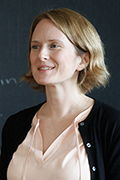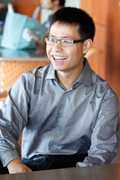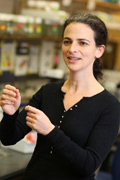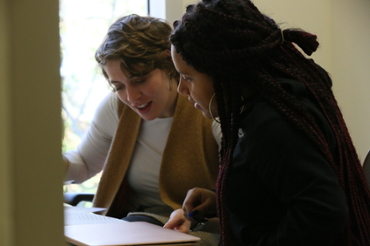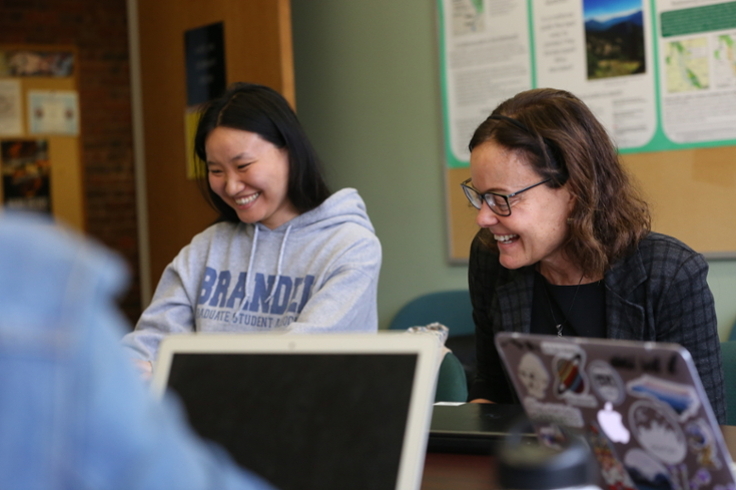Geeking Out With...Neerja Garikipati
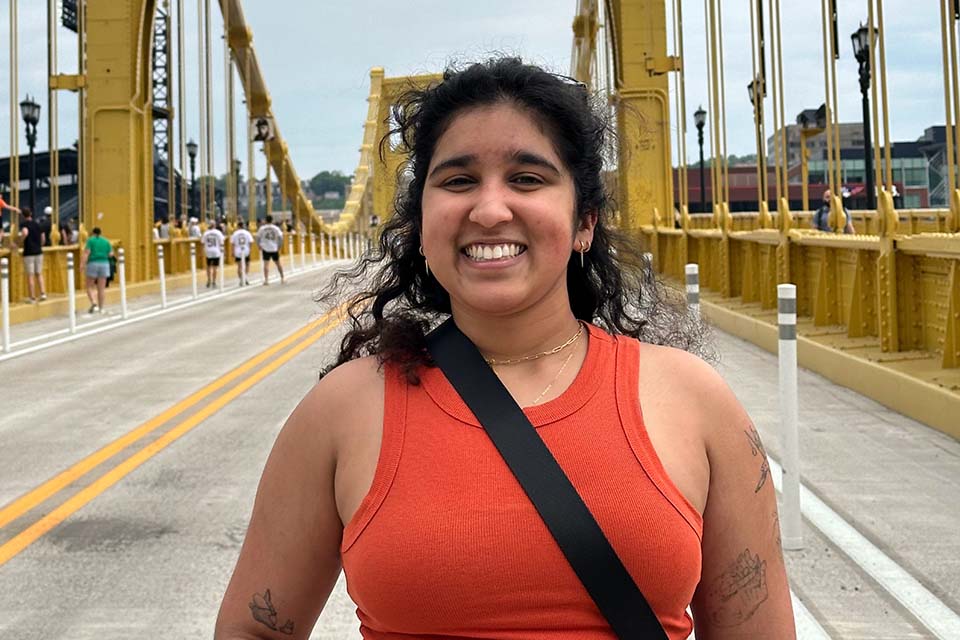
March 7, 2025
Abigail Arnold | Graduate School of Arts and Sciences
Geeking Out With…is a feature in which we talk to GSAS students about their passions. You can check out past installments here.
Neerja Garikipati is a fourth-year PhD student in Biochemistry and Biophysics. They are a student in the Theobald lab, which studies molecular evolution. They joined Geeking Out With… to discuss their research into a class of metabolic enzymes in a family of parasites and how they evolved to perform the chemistry they do.
This interview has been edited for clarity.
How did you become interested in biochemistry in general and in the specific area you study?
My family has a very strong academic background. Both my parents are academics: my dad is a mechanical engineering professor, and my mom is a physician. When I was growing up and we were talking at the dinner table, they would always ask about what I’d learned in science and math. I’ve always loved science and, as early as high school, would have been happy just doing research in the lab instead of going to class. Two of my favorite questions to ask are “Why?” and “How?” I love life sciences but especially biochemistry because you really get to the root of these questions: what is happening on a molecular level, why do you see a reaction happening, and how does it work? In addition, I’ve always found evolution very cool and like getting to do research that marries biochemistry with this force that drives all of life and to understand how and why it happens.
What have you been investigating in your recent experiments?
The specific class of enzymes I study are essential metabolic enzymes found in every domain of life and critical for maintaining molecules that go on to make things like ATP (used for basic energy storage). Typically, they are very specific in the reactions they perform; they act only on one molecule and do it really, really well, as opposed to some other enzymes that perform a lot of different reactions. The general wisdom in the field is that while these enzymes can only act on one molecule, they evolved from an intermediate stage of enzymes that could act on more than one. For various reasons, the intermediate stage is hard to study, so scientists would like to find a modern-day enzyme that could do the same type of reactions.
A few years back, while doing evolutionary analyses in the lab, we discovered that there are enzymes that appear as one type, lactate dehydrogenase, in databases, but that work as two different types, lactate and malate dehydrogenase. So I recently performed a series of experiments to test whether these enzymes were purely lactate dehydrogenase or both lactate dehydrogenase and malate dehydrogenase. I did this by giving the enzymes both of their substrates (the substances on which they act) and calculating parameters to see how well they handled them both. I found that the enzymes can handle them both quite well at a level considered physiologically relevant. So the next question I wanted to answer was what in the protein sequence is responsible. I generated a series of mutants and found there is one amino acid shown across members of this family, and specifically this class of parasites we work with, that stays constant even in this bi-specific enzyme. For malate dehydrogenase, the mechanism is a bit more complicated, which is not what I was expecting, as in traditional lactate dehydrogenase and malate dehydrogenase the mechanisms are quite specific and easy to disrupt. So there are now more questions about what contributes to these complications.
What do you plan to explore next?
Now that we know that this enzyme is actually bispecific and the amino acids that are responsible for its bi-specificity, I want to investigate the dynamics in the protein that contribute to it. We know that proteins aren’t static objects and that they undergo motion in order to carry out their chemistry, and since my enzyme breaks the ‘traditional’ LDH specificity paradigm, it’s possible that the motions in the enzyme are different as well. There are several experiments we can do to monitor how amino acids move. A lot of classical depictions show proteins as static structures, but they are constantly undergoing motion, which could be random brownian motion or specific motion when bonded to a substrate. I’ll be looking at some of the techniques to monitor their motion next.
Are you exploring these questions more out of scientific curiosity, or are you looking at specific applications?
For me and others in the lab, it is more of a pure scientific investigation: we want to know how evolution happens on a molecular level. However, this family of parasites, apicomplexa, includes one that is responsible for malaria, one that is responsible for toxoplasmosis, and one (the one that I study) that is responsible for blood-borne illnesses in cattle. They are essential metabolic enzymes, so if you render them non-functional, you could kill the parasite. So, although it’s very downstream, this research could have implications in creating drugs to fight these parasites.
How have you evolved as a biochemist over the time you’ve been working in the field?
I majored in biochemistry as an undergraduate, but I worked in a computational biology lab and had very little practical bench experience. Doing my lab rotations in my first year at Brandeis, I wanted to get a good balance between labs that focused on bench work, computational labs, and those that were a mix. I think we’re seeing more in biochemistry about how both sides are so important. Computational biology gives you so many models that you can’t do in practice on the bench, but so much of it is theoretical, so you need work on the bench to validate it. It’s important to have both sides, and it’s been so great to be in a lab where we use both and see how they interact. It’s very cool and fulfilling.
Who at Brandeis has helped you in your research?
My PI, Doug Theobald, has been a big influence. When you give him data or an update, instead of immediately giving you an answer back, he really takes the time to sit and think about it. He gives you a very thoughtful answer. This has taught me to sit and think deeply about my data and science. Sometimes when I was a kid, I would ask my dad something and he would sit and stare into space. I’d ask what he was doing, and he’d say he was thinking about his science. But I never really got that until I started in Doug’s lab, and now I’m realizing how incredibly important the thinking process is.
I also have a really great thesis committee and feel so lucky they all agreed to be on my committee. Niels Bradshaw, who is a member of my committee, has taken time out of his day to sit and talk through a problem with me, which I think is really rare and special. When I applied to Brandeis, one thing that stood out to me about the department was how plugged in every faculty member is and how invested they are even in students who aren’t in their lab.
When you’re not doing research, what do you like to do?
I like to run. When I moved out here, everyone talked about the Boston Marathon, and I think that having such a major race here has a trickle-down effect and spreads into the community. My first day moving into my apartment, I saw ten or twelve people running just in Waltham! I was a swimmer in high school and college and ran only occasionally, but since moving out here, I’ve really started to like running. The running community is so friendly in Boston. I’ve started doing triathlons too! The endurance sport community in greater Boston and New England is also super cool and friendly, and, since we’re close to the coast, there are many small, easy-to-access triathlons. I’m also a big motor sports fan and watch a lot of Formula One and other racing.
What advice do you have for other students exploring their passions?
Starting is often the hardest part. Something I tell myself a lot, when I’m starting a new experiment, is that it’s okay to be scared: you just do it scared. Obviously when you start something new, it’s not easy, but you do it because you love it. Ideally, that love and enthusiasm should be enough to get you started, and then things get easier and you figure out your own path.
